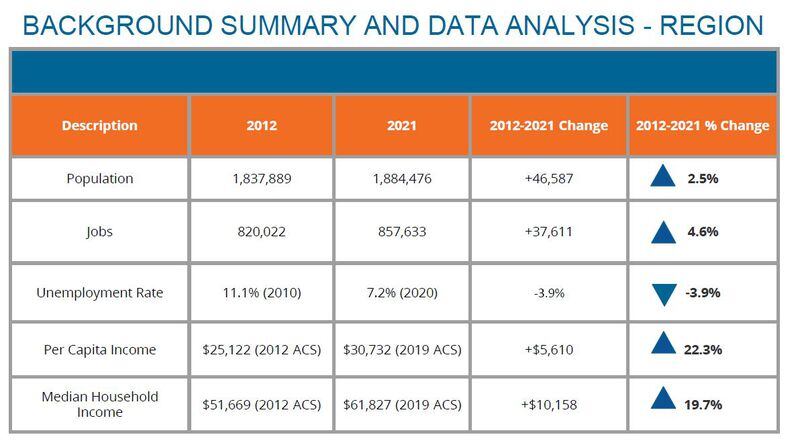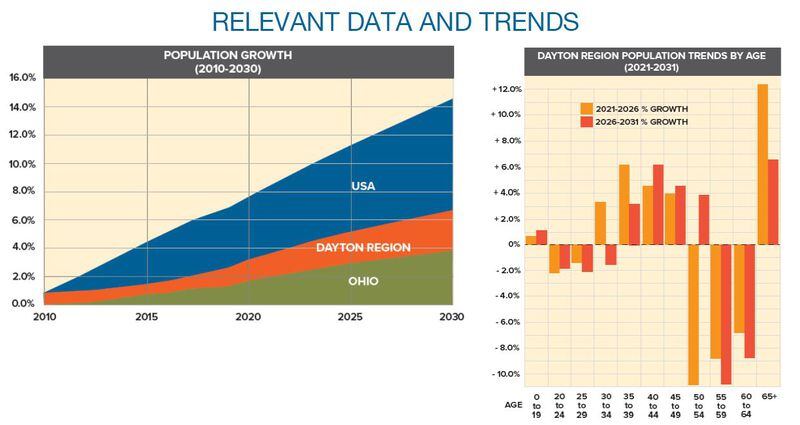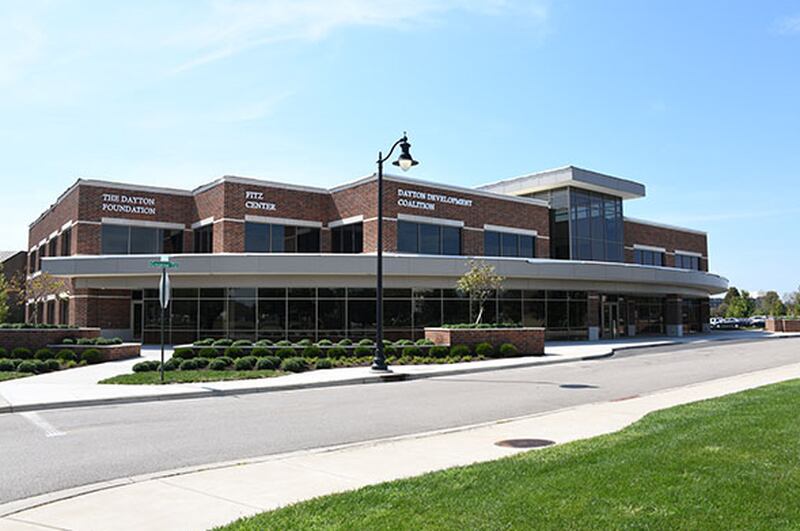Between 2012 and 2021, the population of the 13-county area grew 2.5% to 1,884,476, according to data shared in a presentation by the Dayton Development Coalition and the Miami Valley Regional Planning Commission.
During the same period, employment in the region increased by 4.6% to approximately 857,640 jobs, the data showed.
Analysis of Dayton area data, including population and employment growth. CONTRIBUTED

Analysis of Dayton area data, including population and employment growth. CONTRIBUTED
The region includes Butler, Champaign, Clark, Greene, Miami, Montgomery, Warren, Auglaize, Clinton, Darke, Mercer, Preble, and Shelby counties.
The Dayton Development Coalition and the Miami Valley Regional Planning Commission are working to develop a comprehensive economic development strategy, which is a regional economic development strategic plan.
The strategy includes a variety of data points that highlight some of the region’s strengths and challenges.
Between 2021 and 2025, the Dayton area is expected to see a 1.3% increase in population but a 1.8% increase in jobs, according to the coalition.
According to the United States Bureau of Labor Statistics, population is the most important factor in determining the size and composition of the labor force, that is, the number of people working or looking for work.
Communities across the country face potential labor shortages as the workforce ages and birth rates drop, Sullivan said.
Projected population growth for the Dayton area. CONTRIBUTED

Projected population growth for the Dayton area. CONTRIBUTED
The region must find ways to develop, attract and retain talent and its workforce, she said. Other priorities focus on infrastructure, vibrant communities, small business and entrepreneurship, and a resilient economy.
Headquarters of the Dayton Development Coalition in Dayton
Credit: Contribution

Headquarters of the Dayton Development Coalition in Dayton
Credit: Contribution
Credit: Contribution
Workforce partners help support job seekers by ensuring they have the skills and training they need to meet the needs of local industries, Sullivan said, and K-12 are increasingly focusing on establishing career paths to learn important skills at an early age.
Sullivan said the goal is to create a talent pool that meets the needs of regional employers.
Data on income, unemployment and level of education in the region. CONTRIBUTED

Data on income, unemployment and level of education in the region. CONTRIBUTED
The region has clear strengths, including an affordable cost of living and good quality of life, she said, and vibrant communities do well in attracting and retaining talent.
“We need to show that we’re not just offering jobs, but a career path for people to move here and want to stay long term,” she said. “We also need to help people connect with their community to create the connections that keep people here.”
Stronger job growth than population growth can have benefits.
If demand for labor exceeds supply, wages should rise, which is good for workers, even if it means employers will face higher labor costs, said Bruce Weinberg, a professor in the department of Economics from Ohio State University.
“It is certain that very rapid growth in demand can lead to social problems,” he said, “…but a moderate growth in demand relative to supply should attract people from other parts of the country and may well encourage more people to work”.
He continued: “For example, more retirees can take jobs, often part-time.”
Mary Johnson shakes hands with Dayton Public Schools Human Resources partner Andrae Hicks Wednesday, Sept. 29, 2021 after a job interview. Dayton Public Schools held a job fair at the Jackson Center on Abbey Ave. JIM NOELKER/STAFF
1 credit

Mary Johnson shakes hands with Dayton Public Schools Human Resources partner Andrae Hicks Wednesday, Sept. 29, 2021 after a job interview. Dayton Public Schools held a job fair at the Jackson Center on Abbey Ave. JIM NOELKER/STAFF
1 credit
1 credit
Employment projections from Ohio Labor Market Information indicate that the number of jobs in Western Ohio is expected to increase by 0.6% between 2018 and 2028.
This area includes 12 counties: Auglaize, Champaign, Clark, Clinton, Darke, Greene, Fayette, Mercer, Miami, Montgomery, Preble and Shelby counties.
Ohio has six JobsOhio regions in the state, and projected job growth in western Ohio exceeds all but central Ohio (5.2% growth) and southeastern Ohio. western Ohio (+2.5%).
Industries expected to experience the most robust growth in Western Ohio include health care and social assistance (+10.5%), construction (+8.9%), professional services, technical and legal (+7.4%) and transportation and warehousing (+7.1%) .
The sectors expected to see the largest job losses are state governments (-8%), retail (-4%), information (-3.9%) and manufacturing (-3 .8%), according to employment outlook projections.

